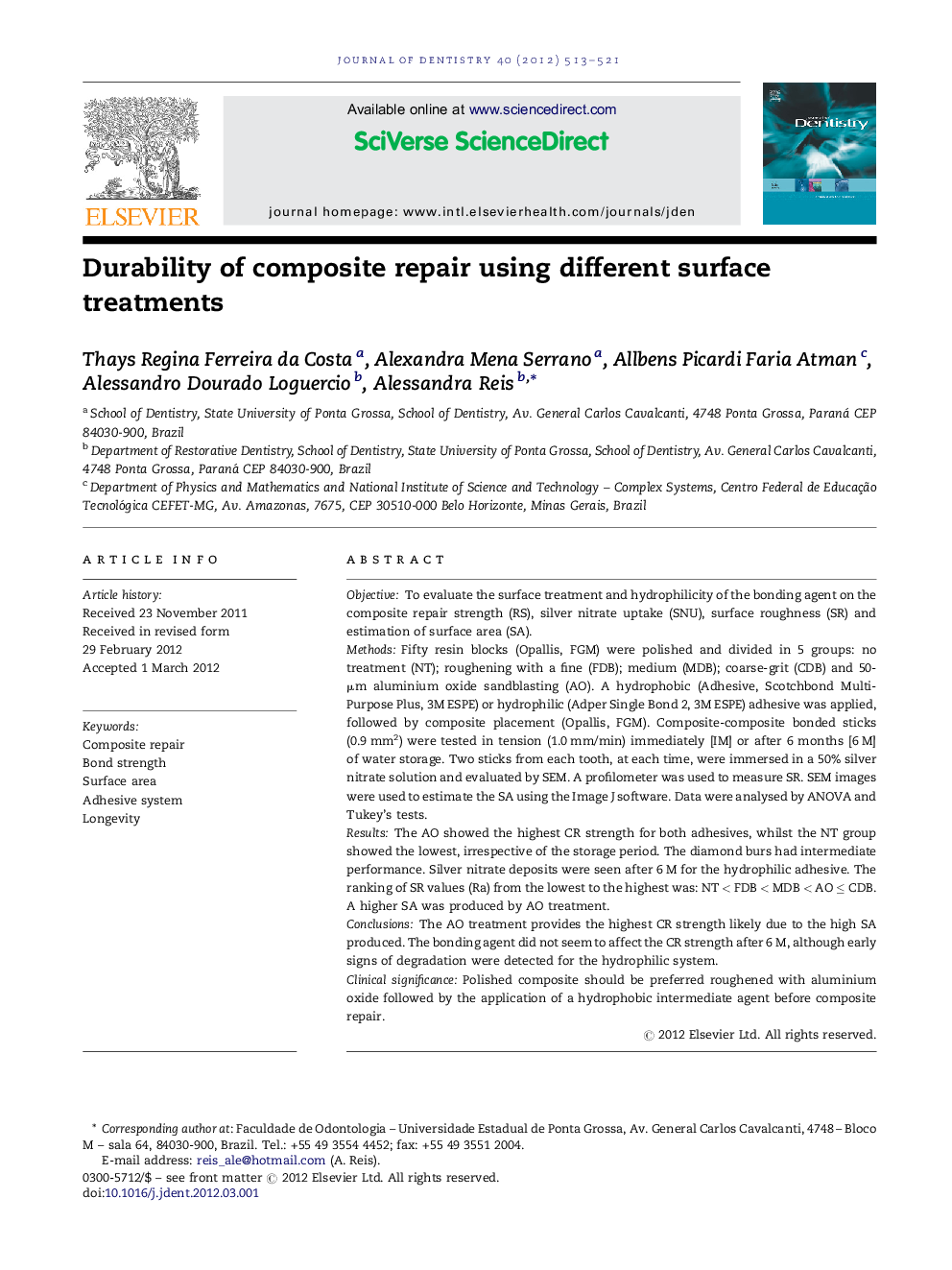| کد مقاله | کد نشریه | سال انتشار | مقاله انگلیسی | نسخه تمام متن |
|---|---|---|---|---|
| 3145191 | 1197050 | 2012 | 9 صفحه PDF | دانلود رایگان |

ObjectiveTo evaluate the surface treatment and hydrophilicity of the bonding agent on the composite repair strength (RS), silver nitrate uptake (SNU), surface roughness (SR) and estimation of surface area (SA).MethodsFifty resin blocks (Opallis, FGM) were polished and divided in 5 groups: no treatment (NT); roughening with a fine (FDB); medium (MDB); coarse-grit (CDB) and 50-μm aluminium oxide sandblasting (AO). A hydrophobic (Adhesive, Scotchbond Multi-Purpose Plus, 3M ESPE) or hydrophilic (Adper Single Bond 2, 3M ESPE) adhesive was applied, followed by composite placement (Opallis, FGM). Composite-composite bonded sticks (0.9 mm2) were tested in tension (1.0 mm/min) immediately [IM] or after 6 months [6 M] of water storage. Two sticks from each tooth, at each time, were immersed in a 50% silver nitrate solution and evaluated by SEM. A profilometer was used to measure SR. SEM images were used to estimate the SA using the Image J software. Data were analysed by ANOVA and Tukey's tests.ResultsThe AO showed the highest CR strength for both adhesives, whilst the NT group showed the lowest, irrespective of the storage period. The diamond burs had intermediate performance. Silver nitrate deposits were seen after 6 M for the hydrophilic adhesive. The ranking of SR values (Ra) from the lowest to the highest was: NT < FDB < MDB < AO ≤ CDB. A higher SA was produced by AO treatment.ConclusionsThe AO treatment provides the highest CR strength likely due to the high SA produced. The bonding agent did not seem to affect the CR strength after 6 M, although early signs of degradation were detected for the hydrophilic system.Clinical significancePolished composite should be preferred roughened with aluminium oxide followed by the application of a hydrophobic intermediate agent before composite repair.
Journal: Journal of Dentistry - Volume 40, Issue 6, June 2012, Pages 513–521